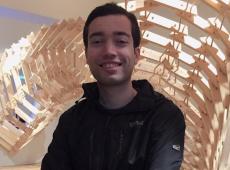Despite well-developed theories for solid surface flame spread we still lack a coherent theory to describe flame spread through porous wildland fuel beds. This motivates ongoing global efforts, including those at the Missoula Fire Lab, to undertake the fundamental research required to enable the development of the next generation of modelling tools. An increasing focus on prescribed fire and active fire management will place additional demands on these tools and will require greater consideration of the role of fuel structure in order to understand the effects of alternative fuel management approaches. This talk will share findings from an extensive series of laboratory-based, quiescent flame spread experiments conducted at The University of Edinburgh in which the structure of matt-type fuel beds were systematically varied in order to understand the effect of key structural parameters (e.g. fuel loading, fuel height, bulk density) on both the overall fire behaviour and the underlying physical processes driving flame spread in low-intensity flame spread scenarios. The physical insights gained can support empirical, semi-empirical and physics-based modelling approaches and various areas for further development have been identified. Conducted as part of a multi-scale SERDP project (RC2641), several of the studied fuel conditions closely mirror those present in complimentary bench-scale, wind tunnel, and field experiments. Future comparison across these scales will provide further insight into existing modelling capabilities and the combined roles of fuel, topography and weather in low-intensity flame spread typical of many prescribed fire scenarios.
More information about the wider project (SERDP RC-2641: ‘Multi-scale Analyses of Wildland Fire Combustion Processes in Open-canopied Forests using Coupled and Iteratively Informed Laboratory-, Field-, and Model-based Approaches’) led by Dr Nicholas Skowronski (USFS – Northern Research Station) and involving researchers from the University of Edinburgh, Worchester Polytechnic Institute, Michigan State University, West Virginia University, Rochester Institute of Technology, and Kucera International can be found here.
